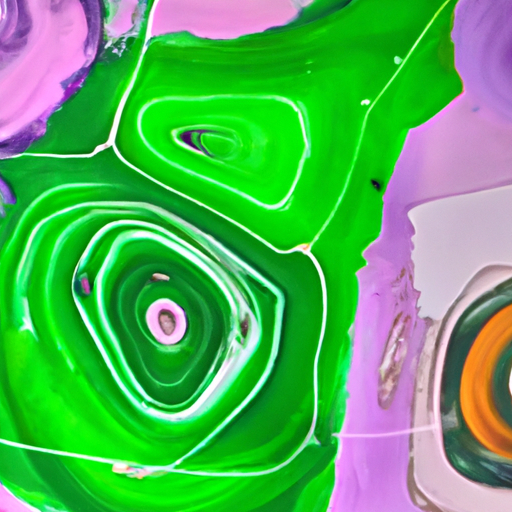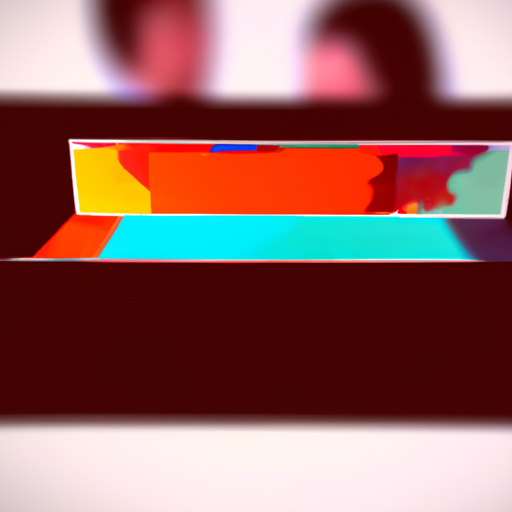
-
Table of Contents
- Adding Depth: Textures and Layers in Design
- The Importance of Textures and Layers
- The Impact of Textures and Layers on User Experience
- Effective Incorporation of Textures and Layers
- 1. Use Textures and Layers to Create Depth
- 2. Consider the Context and Purpose
- 3. Balance and Contrast
- 4. Experiment with Different Textures and Layers
- Case Studies: Successful Use of Textures and Layers
- 1. Apple iOS Design
- 2. Airbnb Website
- 3. Nike Branding
- Summary
Adding Depth: Textures and Layers in Design

When it comes to design, creating a visually appealing and engaging experience is crucial. One way to achieve this is by adding depth through the use of textures and layers. Textures and layers can bring a sense of realism, dimension, and interest to a design, making it more visually appealing and memorable. In this article, we will explore the importance of textures and layers in design, their impact on user experience, and how to effectively incorporate them into your designs.
The Importance of Textures and Layers
Textures and layers play a significant role in design by adding depth and visual interest. They can transform a flat and lifeless design into a dynamic and engaging experience. Here are some key reasons why textures and layers are important:
- Enhancing Visual Appeal: Textures and layers add visual interest and complexity to a design, making it more visually appealing. They can create a sense of depth, richness, and realism, making the design more engaging and memorable.
- Creating Hierarchy and Focus: By using different textures and layers, designers can create a visual hierarchy and guide the viewer’s attention to specific elements. This helps in conveying the intended message and guiding the user through the design.
- Conveying Emotions and Meanings: Textures and layers can evoke emotions and convey meanings. For example, a rough texture can create a sense of ruggedness or authenticity, while a soft texture can evoke a feeling of comfort or luxury. By carefully selecting and using textures and layers, designers can enhance the emotional impact of their designs.
- Adding Realism and Depth: Textures and layers can simulate real-world materials and objects, adding a sense of realism and depth to a design. This can make the design more relatable and tangible to the viewer.
The Impact of Textures and Layers on User Experience
Textures and layers not only enhance the visual appeal of a design but also have a significant impact on user experience. Here are some ways in which textures and layers can improve user experience:
- Engagement and Attention: Textures and layers can capture the user’s attention and keep them engaged with the design. By adding depth and visual interest, they create a more immersive experience, making the user more likely to explore and interact with the design.
- Usability and Clarity: While textures and layers add complexity to a design, they can also be used to improve usability and clarity. By creating a visual hierarchy and guiding the user’s attention, textures and layers can make the design more intuitive and easier to navigate.
- Brand Identity and Recognition: Textures and layers can be used to create a unique and recognizable brand identity. By consistently using specific textures and layers across different designs, a brand can establish a visual language that helps users identify and connect with the brand.
- Emotional Connection: Textures and layers can evoke emotions and create a deeper emotional connection with the user. By using textures and layers that resonate with the target audience, designers can create a more meaningful and memorable experience.
Effective Incorporation of Textures and Layers
Now that we understand the importance of textures and layers in design, let’s explore some effective ways to incorporate them into your designs:
1. Use Textures and Layers to Create Depth
Textures and layers can be used to create a sense of depth in a design. By using shadows, gradients, and overlapping elements, designers can simulate a three-dimensional space, making the design more visually interesting and engaging. For example, a website can use a textured background with overlapping layers to create a sense of depth and dimension.
2. Consider the Context and Purpose
When incorporating textures and layers, it is important to consider the context and purpose of the design. Different textures and layers evoke different emotions and meanings, so it is crucial to select ones that align with the intended message and target audience. For example, a healthcare app may use soft and smooth textures to create a sense of comfort and trust.
3. Balance and Contrast
Textures and layers should be used in a balanced and contrasting manner to create visual interest. Too many textures and layers can overwhelm the viewer and make the design cluttered. On the other hand, too few textures and layers can make the design appear flat and uninteresting. By finding the right balance and creating contrast between different elements, designers can create a visually appealing and harmonious design.
4. Experiment with Different Textures and Layers
Don’t be afraid to experiment with different textures and layers to find the ones that work best for your design. There are countless possibilities, ranging from subtle textures to bold patterns. By exploring different options and combinations, you can discover unique and creative ways to incorporate textures and layers into your designs.
Case Studies: Successful Use of Textures and Layers
Let’s take a look at some real-world examples of successful use of textures and layers in design:
1. Apple iOS Design
Apple’s iOS design is known for its use of textures and layers to create a visually rich and immersive experience. The use of subtle gradients, shadows, and layered elements gives the interface a sense of depth and realism. This not only enhances the visual appeal but also improves usability by providing visual cues and hierarchy.
2. Airbnb Website
The Airbnb website incorporates textures and layers to create a sense of authenticity and warmth. The use of textured backgrounds, overlapping elements, and subtle shadows adds depth and visual interest to the design. This creates a more immersive experience for users, making them feel connected to the destinations they are exploring.
3. Nike Branding
Nike’s branding incorporates textures and layers to create a sense of energy and movement. The use of dynamic patterns, overlapping elements, and bold textures reflects the brand’s active and sporty identity. This not only makes the designs visually appealing but also conveys the brand’s values and personality.
Summary
Textures and layers are powerful tools in design that can add depth, visual interest, and engagement to a design. They enhance the visual appeal, create hierarchy and focus, convey emotions and meanings, and add realism and depth. Textures and layers also have a significant impact on user experience by improving engagement, usability, brand recognition, and emotional connection. By effectively incorporating textures and layers into your designs, you can create visually appealing and memorable experiences for your users.
